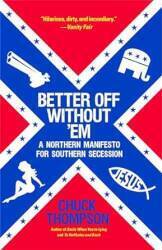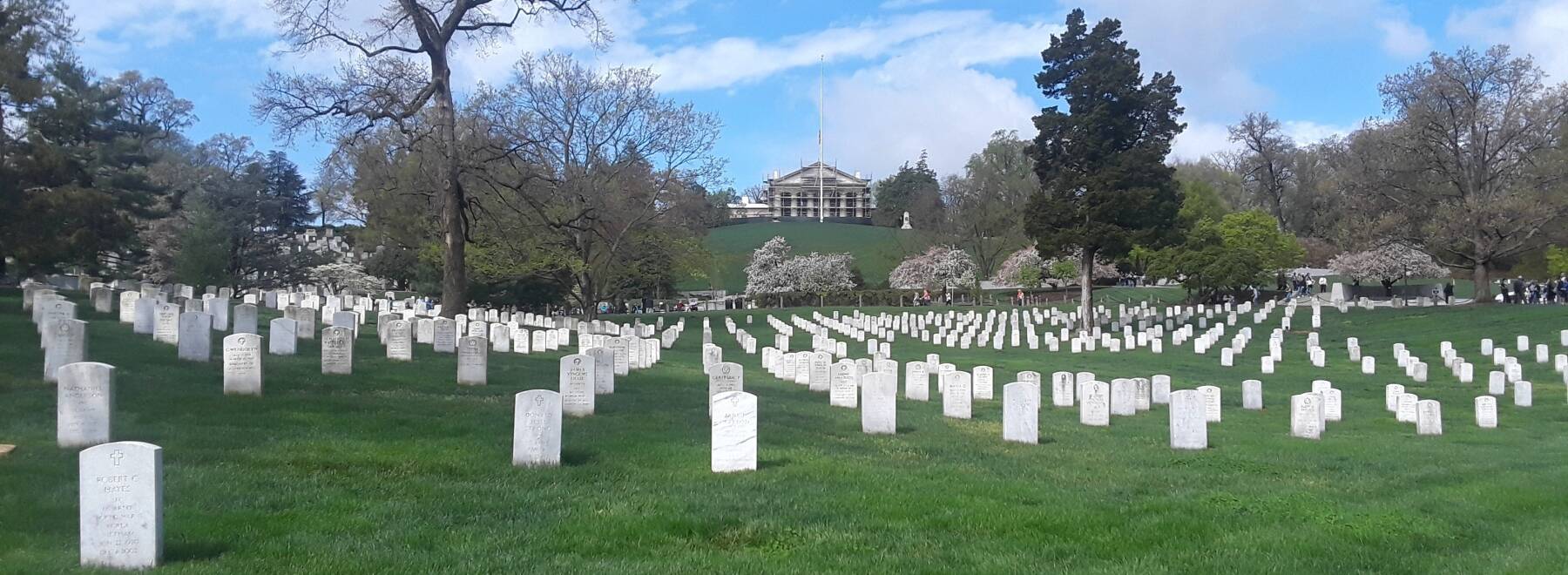
Robert E. Lee's Home in Arlington
Lee in Arlington
Robert E. Lee,
supreme commander of Confederate military forces during
the U.S. Civil War, lived in a mansion
his wife had inherited from her ancestors.
The mansion is on a hilltop in Arlington, Virginia,
overlooking the Potomac River and Washington, D.C.
Lee turned traitor and resigned from the U.S. Army
when the southern states seceded, so he could lead
the Confederate military in their war to preserve slavery.
The U.S. Government seized the property and turned it into
Arlington National Cemetery.
Yes, the Civil War was About Slavery
The so-called "Lost Cause" ideology claims that the Confederacy's cause was a just and heroic one, somehow preserving an imagined southern way of life and having nothing to do with slavery. That's nonsense in the service of racism.
South Carolina Declaration of SecessionEvery Confederate state's declaration secession explained that it was to preserve slavery. That of South Carolina was the first and thus the best example, stating that the primary reason was "increasing hostility on the part of the non-slaveholding States to the Institution of Slavery".
The congressmen from slave-owning states who resigned from Congress to join the Confederacy all cited the preservation of slavery as a reason.
ConfederateConstitution
The Constitution of the Confederate States of America made it very clear. Then the Confederate Vice President declared that his "country" was based on white supremacy and the belief that white men had the right to buy, sell, and own non-white people.
Its foundations are laid, its cornerstone rests upon the great truth, that the negro is not equal to the white man; that slavery—subordination to the superior race—is his natural and normal condition. This, our new government, is the first, in the history of the world, based upon this great physical, philosophical, and moral truth.
That's what Lee was fighting for.
Arlington Cemetery
Arlington National Cemetery contains about 400,000 graves spread over 624 acres. About 6,900 burials occur each year. Only the Calverton National Cemetery on eastern Long Island, New York, is larger in area and conducts more burials per year.

The Arlington Memorial Bridge leads from the Lincoln Memorial at the west end of the National Mall, across the Potomac, into Memorial Avenue, which we're on here. There's the Lee mansion at the top of the hill.

George Washington to Robert E Lee
Martha Dandridge had married and given birth to four children by the time she was widowed at the age of 25. She then married George Washington. One of her sons died of "swamp fever" within six months of his son's birth. That boy, Martha's grandson George Washington Parke Curtis, was adopted by George and grew up at his estate of Mount Vernon.
Curtis inherited large amounts of money from his father and grandfather, and then more money plus real estate and slaves from George and Martha Washington. He directed the building of the first example of Greek Revival architecture in America. Slaves, of course, did the hard work. Interrupted by the War of 1812, the exterior of the house was finally finished in 1818.
His daughter Mary then married Robert E Lee in 1831. That was two years after Lee had graduated from West Point Military Academy. He had served since then as an officer involved in the construction and maintenance of various forts.
Mary had three siblings, but none had survived childhood. Her father had fathered children by some of his enslaved women. He gave one of them an 18-acre plot on his estate. But the rest, of course, received nothing.
When Curtis died in 1857, his daughter Mary, the great-granddaughter of Martha Washington, inherited his estate. The estate included the mansion and surrounding 1,100 acres of land, other pieces of real estate, and, of course, hundreds of slaves.
Lee set about executing the will. His father-in-law had died with massive debts. The will required that Curtis's hundreds of slaves be set free within five years.
Lee, by then a Lieutenant Colonel, took a two-year leave of absence from the Army to try to straighten out the estate's affairs. The slaves had been led to believe that they would be freed as soon as Curtis died. The slaves nearly revolted. Lee turned to cruelty and violence, and sold slaves individually to be forced to labor elsewhere for at least the remainder of the 5-year period. By 1860 he had broken up every family on the estate except for one, ignoring the Washington and Curtis traditions of at least keeping slave families together.
Some of Lee's slaves escaped. When captured and returned, Lee had them lashed and the wounds then washed with brine to increase the pain.
Robert E. Lee's Views on Slavery
Lee's wrote to his wife in 1856, saying that slavery was a great evil because of the impact it had on the white people who owned slaves.
I think it however a greater evil to the white man than to the black race, & while my feelings are strongly enlisted in behalf of the latter, my sympathies are more strong for the former. The blacks are immeasurably better off here than in Africa, morally, socially & physically. The painful discipline they are undergoing, is necessary for their instruction as a race, & I hope will prepare & lead them to better things. How long their subjugation may be necessary is known & ordered by a wise Merciful Providence.
So, according to Robert E. Lee, slavery was good for Africans because God said it was.
Lee During the War
"The Myth of the Kindly General Lee"The Atlantic
Lee resigned from the U.S. Army immediately after Virginia seceded in April 1861. He was a senior military adviser to the Confederate President Jefferson Davis for the first year of the Civil War. He took command of the main field army in 1862. Then he was appointed General in Chief of the Armies of the Confederate States in February, 1865.
Throughout the war, he did not try to prevent his soldiers from kidnapping free black farmers and selling them into slavery or keeping them as personal property. The historian Elizabeth Pryor's book Reading the Man: A Portrait of Robert E. Lee Through His Private Letters reports that "evidence links virtually every infantry and cavalry unit in Lee's army" to the abduction of free black Americans, "with the activity under the supervision of senior officers."
Amazon
ASIN: 0143113909
Amazon
ASIN: 1604732199
Confederate troops under Lee's command at the Siege of Petersburg in July 1864 massacred black Union soldiers who were trying to surrender.
In October 1864 Lee proposed an exchange of prisoners. U.S. general Ulysses S. Grant agreed, on the condition that black and white soldiers would be exchanged one-for-one. Lee refused, saying that:
Negroes belonging to our citizens are not considered subjects of exchange and were not included in my proposition.
The U.S. Seizes the Property
The U.S. Army had seized the plantation at the outbreak of war. It belonged to a senior military officer of the adversary, and it had a strategic position overlooking the Potomac River and the U.S. national capital.
Meanwhile, the U.S. Soldiers' Cemetery in Washington and the Alexandria Cemetery, just about 6 and 5.5 acres in size respectively, were almost full.
Mary, living behind Confederate lines, had not been paying property tax. The estate was seized in 1864 for nonpayment of tax. Montgomery C Meigs, Quartermaster General of the U.S. Army, turned parts of the estate into a new national burial ground. On June 15, 1864, it became Arlington National Cemetery.
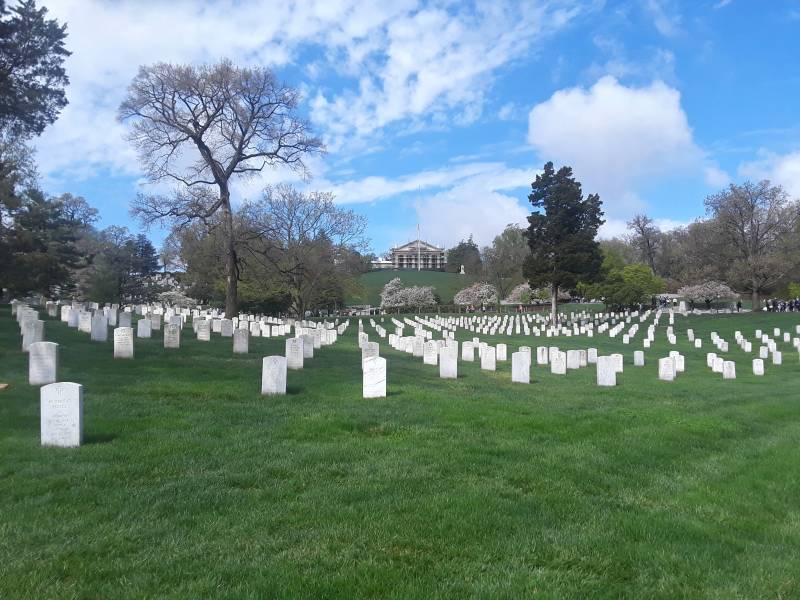
Robert E Lee made no attempt to visit, let alone repossess, the estate after the war. His oldest son, however, who had also served in the Confederate Army against the U.S., sued the national government in 1874 to get the property back. It eventually led to a U.S. Supreme Court decision in 1882 that the property had been ""illegally confiscated". Lee's son didn't want the house, now closely surrounded by graves, he wanted money. The U.S. Government paid him $150,000, worth about four million dollars by 2018.
The Kennedy family burial plot is now at the base of the steep slope below the mansion.
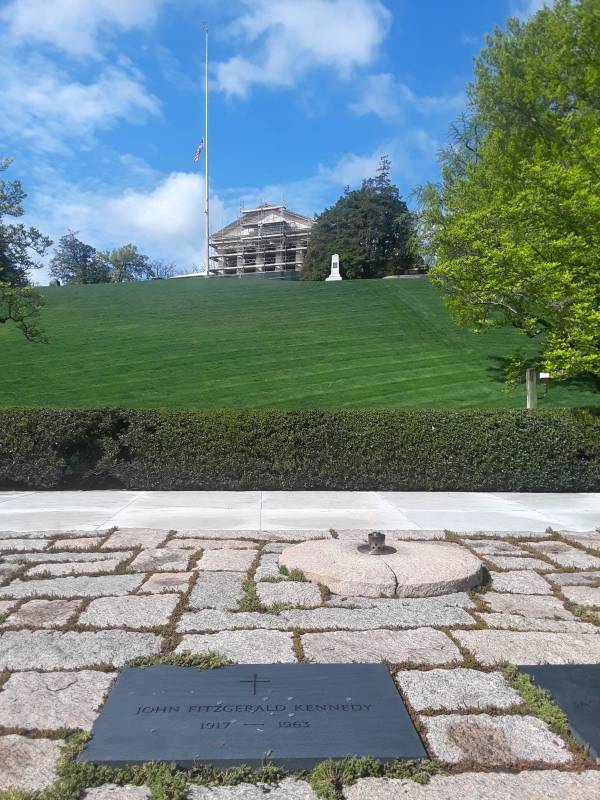
A magnitude 5.8 earthquake occurred in Virginia in 2011. The epicenter was about 80 miles southwest of Arlington. The mansion was damaged. It underwent renovation in 2018-2019, when I visited.
The building seen below is the South Slave Quarters.
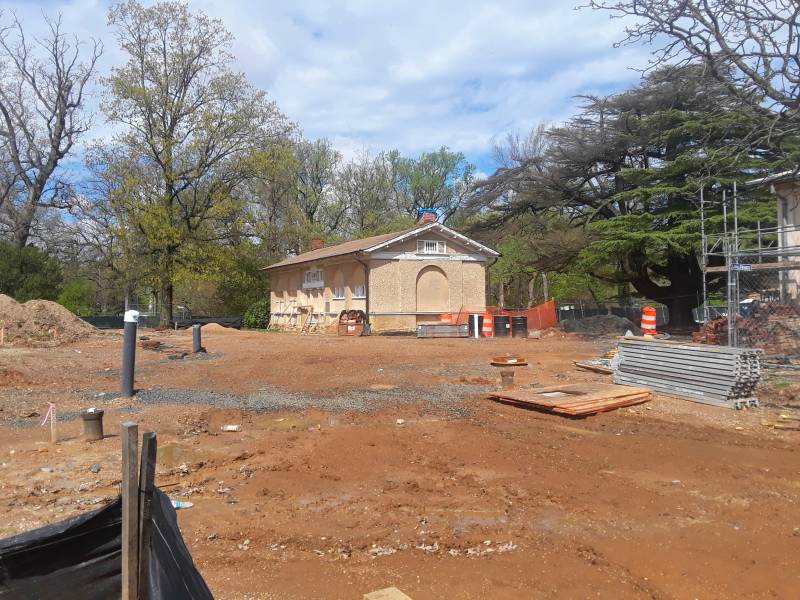
Lee After the War
Lee surrendered to Grant at Appomattox, Virginia, on April 9, 1865.
In 1866 Lee advised southerners to not resume fighting. Ulysses Grant was unimpressed by the effort, saying that Lee was "setting an example of forced acquiescence so grudging and pernicious in its effects" that it might very well be doing the opposite.
Lee continued to insist that the war hadn't been about slavery. But, if it was, then he thought that this somehow was a form of southern Christian charity, saying that:
Unless some humane course is adopted, based on wisdom and Christian principles you do a gross wrong and injustice to the whole negro race in setting them free. And it is only this consideration that has led the wisdom, intelligence and Christianity of the South to support and defend the institution up to this time.
Frederick Douglass said:
Between the Christianity of this land and the Christianity of Christ, I recognize the widest possible difference.
Amazon
ASIN: 1416590315
Amazon
ASIN: 0486284999
Lee was adamantly opposed to voting rights for blacks:
My own opinion is that, at this time, they cannot vote intelligently, and that giving them the [vote] would lead to a great deal of demagogism, and lead to embarrassments in various ways.
He later signed a document endorsing a political opponent to Grant. The endorsement stated:
It is true that the people of the South, in common with a large majority of the people of the North and West, are, for obvious reasons, inflexibly opposed to any system of laws that would place the political power of the country in the hands of the negro race. But this opposition springs from no feeling of enmity, but from a deep-seated conviction that, at present, the negroes have neither the intelligence nor the other qualifications which are necessary to make them safe depositories of political power.
Lee accepted an invitation to serve as the president of Washington College. He said, "We have but one rule here, and it is that every student must be a gentleman." And under Lee's enforced rule of southern honor:
The students formed their own chapter of the KKK and repeatedly attempted to abduct and rape black girls from nearby schools. There were at least two attempted lynchings by the students while Lee was the school's president. Lee had his priorities — he punished trivial matters such as the boys threatening to take unofficial Christmas holidays, while the horrifying racial attacks were punished lightly, if at all.
The school was renamed Washington and Lee University after his death. There had been a few black students in the late 1700s, but of course there were none in the 1800s and through much of the 1900s. Two students who entered as freshmen in 1968 eventually became the first African-Americans to receive bachelor's degrees from the university.
Downstairs in the campus's Lee Chapel, a humming noise emanated from Lee's tomb as the old racist spun like a lathe.
Lee Knew Confederate Monuments Would Be A Bad Idea
Lee was opposed to public memorials to Confederate rebellion. He felt they would prevent the country from fully recovering from the war. Unfortunately, he didn't get his wish.
White supremacy became entrenched in the south, and by the 1890s into the early 20th century it was widely accepted in the north. Lee became a martyr and hero for their so-called "Lost Cause".
The Civil Rights movement began after World War II, causing white outrage and panic. The number and perceived importance of Confederate monuments increased. Many schools through the former Confederacy were renamed in honor of Lee.
Neo-Confederate Beliefs Persist
The state of Texas is one of the largest purchasers of school textbooks, and their frequent Neo-Confederate viewpoints are unfortunately influential. In 2015, a textbook approved by the Texas Board of Education said that many European settlers of North America were indentured servants, but then described black slaves as "workers" and "immigrants".
It's a short distance from Neo-Confederate beliefs to open support for the Ku Klux Klan and neo-Nazi groups.



The Neo-Confederate movement says that the war was about the preservation of the gracious and dignified Southern culture. They're so polite, so well-mannered.

The war was fought to preserve the elegant and dignified Southern lifestyle.

The Neo-Confederates gather for angry marches, perform Nazi salutes, and chant Nazi slogans.


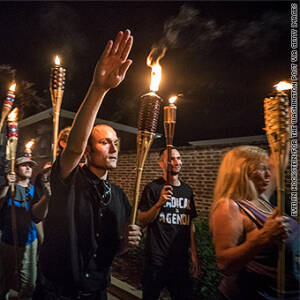
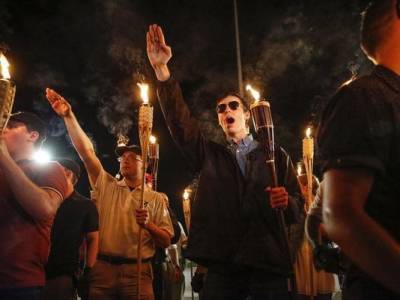

Some are willing to show their faces in daylight.





Where are the Other Monuments?
The Jefferson Davis Highway was planned as a transcontinental highway from Arlington to San Diego, California. It remains in Virginia as SR 110 past the Pentagon and then US 1 from Crystal City to the North Carolina border. From there, it continues south and west through the former Confederacy.
The Lee Highway was planned to connect New York City and San Francisco via a loop through the south, where it found most of its appeal. These days it's US Highways 50 from Washington to Fairfax City, Virginia, 29 on to Warrenton, 211 to New Market, and 11 to Bristol and on into Tennesee.
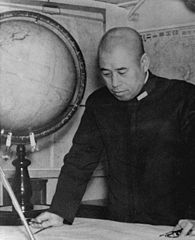
Admiral Osoroku Yamamoto was a military genius who repeatedly advised against Japanese military actions against the U.S. Lee, meanwhile, was an O.K. tactician as long as he had more Confederate bodies to sacrifice, but his strategy was weak and he was quite eager to attack the U.S.
However, Google Maps can't find any Virginia highways named for Yamamoto.
It seems unfair that Davis and Lee get several monuments when Yamamoto doesn't get any.
